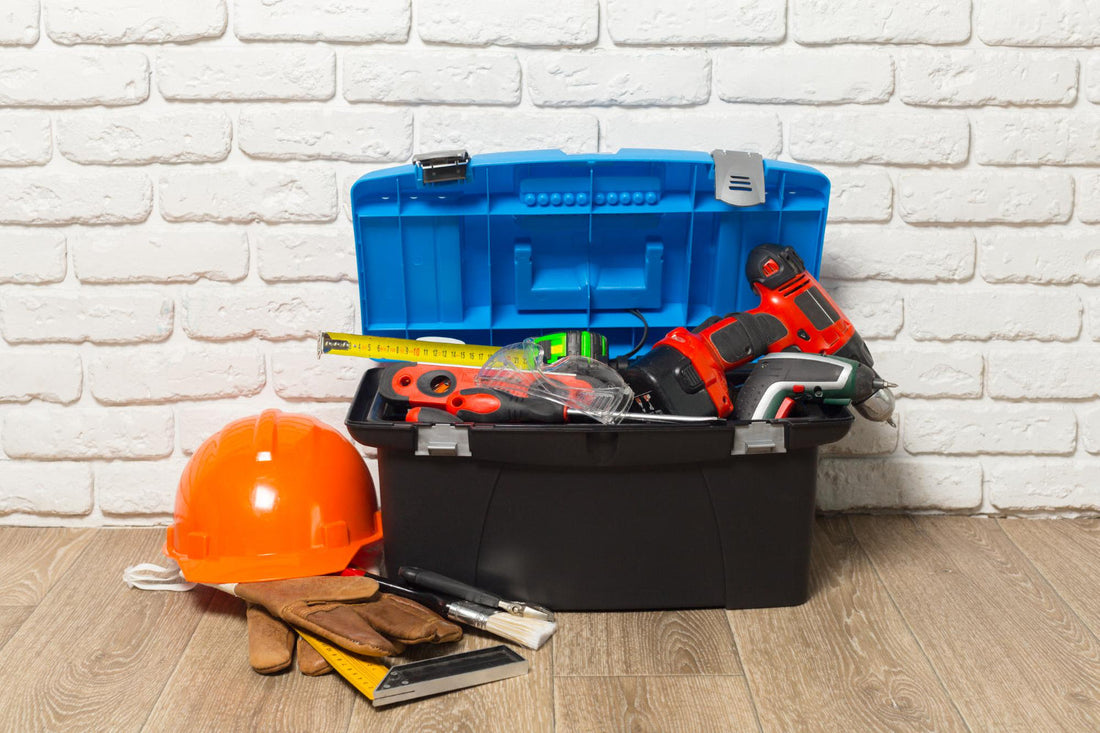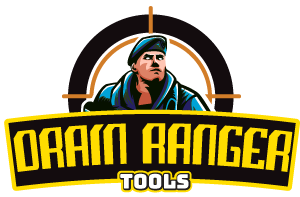
The Complete Guide to Building a Reliable Plumber’s Toolkit
Share
Plumbing in modern spaces needs a complex pipeline and fixture network, delivering clean water without any significant effort from the user’s end. While planning and installation make plumbing more efficient, the effort of plumbing professionals cannot be denied. And they are able to do their job efficiently because of modern plumbing tools.
The United States plumbing sector, being a 169.8 billion dollar industry, has transformed with the shift from basic plumbing tools to specialty plumbing tools. The right plumbing toolkit is important for professional installation of pipes and drainage systems.
What goes in the plumbing toolbox depends on whether the plumbing professional is just starting out or is a pro at what he does.
We offer a comprehensive guide for setting up a reliable plumber’s toolkit.
Why Plumber’s Toolkit Matters?
Tools for plumbing contain specialized tools for the installation, maintenance, and repair of pipes. Plumbers resort to these tools to get plumbing work done.
Equipment in the toolkit comes in handy for handling pipes, cleaning clogs, and taking the right measurements and cuts when needed. Precision with these essential tools can prevent costly damages and make customers satisfied with the plumbing service.
Reasons for Well-Built Plumbing Toolkit
It cannot be emphasized enough why plumbers must have a well-built plumbing toolkit! Precision and perfection, that’s what is ensured by the right plumbing toolkit.
- Efficient and Safe: The correct toolbox with enough space for essential and specialized tools can make the plumbing work shorter and efficient. The protective goggles and PPE help in regular inspection without the plumber facing any safety hazards.
- Time-saving: Common issues like clogs and leaks can be handled in no time with a prepared plumbing toolbox that has plungers and a tubing cutter for pipe changes and clog removal.
- Prompt Action: In case of emergency leaks, the right plumbing toolkit can get you an effortless and hassle-free repair. A professional has all the essential tools like augers, cutters, and wrenches, with other safety elements.
What Are the Must-Have Plumbing Tools?
Whether you do basic plumbing work or are going to attend a rigorous task, know about these must-have plumbing tools to make your toolbox ready for all plumbing emergencies. Here is a list of tools for plumbing that are most needed:
1. Hand Tools
The four tools mentioned are among the most important hand tools:
Pipe Wrenches
Pipe wrenches are needed for plumbing, construction, and maintenance. These are designed to turn cylindrical pipers and other fittings.
These can:
- Offer a secure grip for manipulating the pipes.
- Perform heavy tasks like loosening and tightening pipework.
- Fix differently sized pipers and their fittings with the adjustable jaw.
Channel Locks
Channel lock pliers are an essential for your plumbing toolkit. These can easily grip round objects. These too are adjustable for different sizes, making them right for plumbing.
These lock pilers:
- Have crosshatch teeth on the jaws, offering a secure grip.
- It can hold pipes, grip the knurled nuts, and act as a temporary lever.
- Have jaws fit in all sizes for a strong grip.
Plunger
Plungers are important toolkit items. They offer affordable, simple, and effective solutions to solve clogging problems at your home. As a homeowner, this tool is reliable for solving very common sink or bathroom drain blockages.
Plungers are used for:
- Clearing clogs in drains, toilets, and sinks with suction and pressure.
- Fixing minor plumbing inconveniences at an affordable price.
- Fixing clogs without the need for extra skills (easy to use).
Hacksaw
A hacksaw is a necessary tool for a basic modern toolbox. This is a versatile manual tool with a sharp blade for cutting pipes made of metal and plastic. This is perfect to be used in tight spaces where other powerful tools cannot fit.
You are meant to use them for:
- Cutting pipes of copper and PVC materials.
- Control power saws for measured cuts.
- Reshaping and trimming metal and plastic pieces to the size you need.
These are essential elements, along with precautionary gloves and googles, for proper and efficient pipework.
2. Cutting Tools and Finishing Tools
While plumbing hand tools are definitely essentials, you cannot ignore the cutting and finishing tools. On one hand, you have pipe cutters, deburring tools, and tubing cutters as cutting tools; there are finishing tools like pipe dope or plumber’s putty on the other hand.
Take a look at the table below to understand better:
|
Tools |
Use Case |
|
Pipe cutter |
Slicing pipes for precise cuts Fast and convenient. |
|
Deburring tool |
Removing burrs or sharp edges from metal or plastic. Rotating to clean the edges around the drilled hole. |
|
Tubing cutter |
Cutting tubes of a certain length Customize popping systems |
|
Pipe dope |
Offers a security layer for protecting pipes from leaks. Efficiently seals hydraulic systems |
|
Teflon tapes |
Threaded fitting for taps and faucets. Sealing water lines for better plumbing. |
|
Plumber’s putty |
Watertight seals, strain sinks, and strainers. Setting faucets with a seal between the sink and the faucet. |
Table: Cutting and Finishing Tools Used in Plumbing
Remove barriers from drains and other plumbing systems with basic plumbing tools. For any plumbing toolbox, these wrenching, cutting, and finishing tools are a must.
Specialized Tools for Professional Plumbers
While basic tools are essential, they are not enough for complex plumbing situations. Testing tools and power tools are essentials that you might want to include in your modern toolbox.
1. Testing Tools
You need specialized testing tools for finding the leaks, ensuring system integrity, and proper functioning of the pipes. These are also useful to check for molds and other damage to the system.
- Plumbing Press Tool: These are made of copper, PEX, or stainless steel. It crimps metal on the pipe with high pressure to ensure a watertight seal. The plumbing press tool secures fittings and pipes with pressure and forms a connection that is free of leaks.
- Pipe Inspection Cameras: These cameras help in assessing the inner sections of pipes, ducts, and other places that are difficult to reach. You can identify the infrastructural damage and diagnose blockages in piping. The visual detection offers clarity.
- Moisture Meters: The moisture meters test the water content in the walls, floors, and concrete. High moisture levels are detected with this to see if there are any pipe leaks.
2. Power Tools
Professional plumbers make use of certain power tools to fix complex plumbing problems. However, always remember to ensure safety when using these tools.
- Cordless Drill: The tool is used for drilling holes in the floors or walls for installing pipes. The pipes are secured with brackets; valves are installed with a cordless drill. It can make installation easy.
- Drain Auger: It is a flexible metal cable that is used for clearing adamant clogs in sinks. It is inserted into the drain until it finds the obstruction. The clog can be broken up with the corkscrew-shaped end.
- Reciprocating Saw: This plumbing tool is used for cutting pipes and for removing the materials that block access to pipes. The back-and-forth motion of this tool makes it easy to use while maintaining precision.
A well-structured plumbing tool kit, with a blend of these basic plumbing tools and specialty plumbing tools, can make plumbing emergencies easier for you to handle. Whether you are a professional plumber or a beginner, make sure these tools are in your toolkit.
Sample Tool Kits
Here are some toolkit ideas based on expertise level:
Beginner Toolkit
- Basic plumbing hand tools
- Plunger
- Pipe wrench
- Teflon tapes
Intermediate Toolkit
- Pipe cutter
- Auger
- Power drill
- Basic plumbing tools
Professional Toolkit
- Inspection tools
- Electric snakes
- Augers
- Power drills
- Plungers
- Backup tools
- Safety wearables
For every emergency plumbing situation, your plumbing toolkit must be ready.
In Summation
A plumbing toolkit needs to be created based on the expertise level. The general beginner toolkit with plungers and wrenches is a basic need. A kit with more specialized tools can help you in grave plumbing hazards. Decide which tools you need and make plumbing work easier!
Want the Best Quality Plumbing Tools for Your Plumbing Emergencies?
Find a wide range of plumbing tools on our website and select ones that are perfect for your plumbing toolbox!
Frequently Asked Questions
Which Plunger is Best for Draining Kitchen Sinks?
Sink plungers are perfect for kitchen sinks. This forces the clogs out of the drain with the rubber cup at the end.
How to Maintain a Power Drill?
Remove the debris and dust regularly with cotton fabrics and lubricate the moving parts with the right oil.
What is the Right Way to Use Teflon Paper?
Apply 3 to 4 tight and overlapping wraps. The tape has to be tightly sealed over the fixed plumbing parts.
Which Tool Do I Use First for a Pipe Burst?
An adjustable wrench is the first tool to use for a pipe burst. This helps in turning off the main power supply, after which you use a pipe cutter to remove damaged parts.
